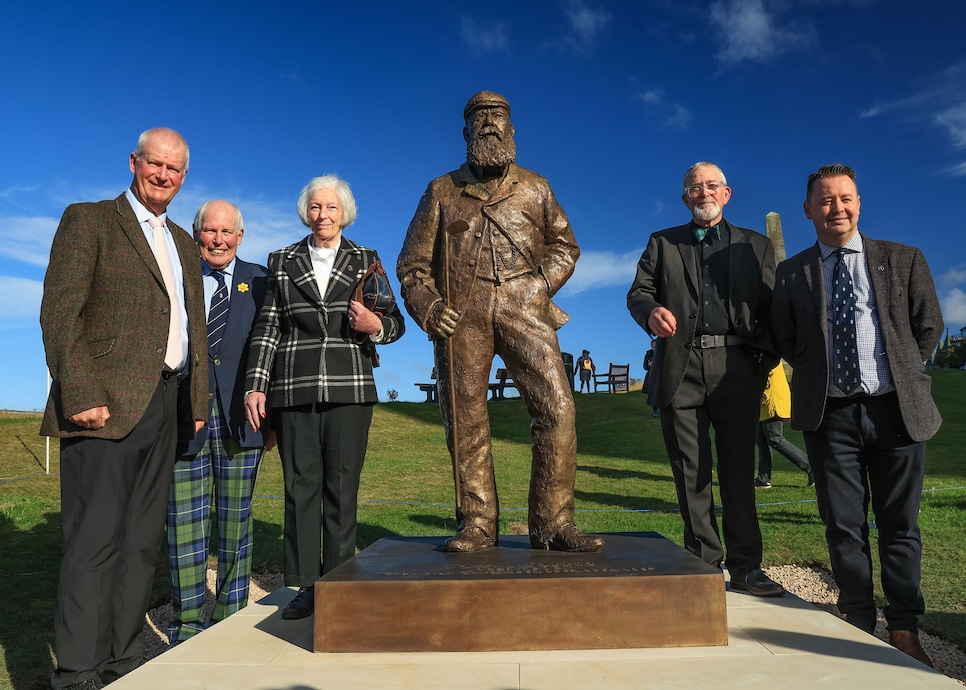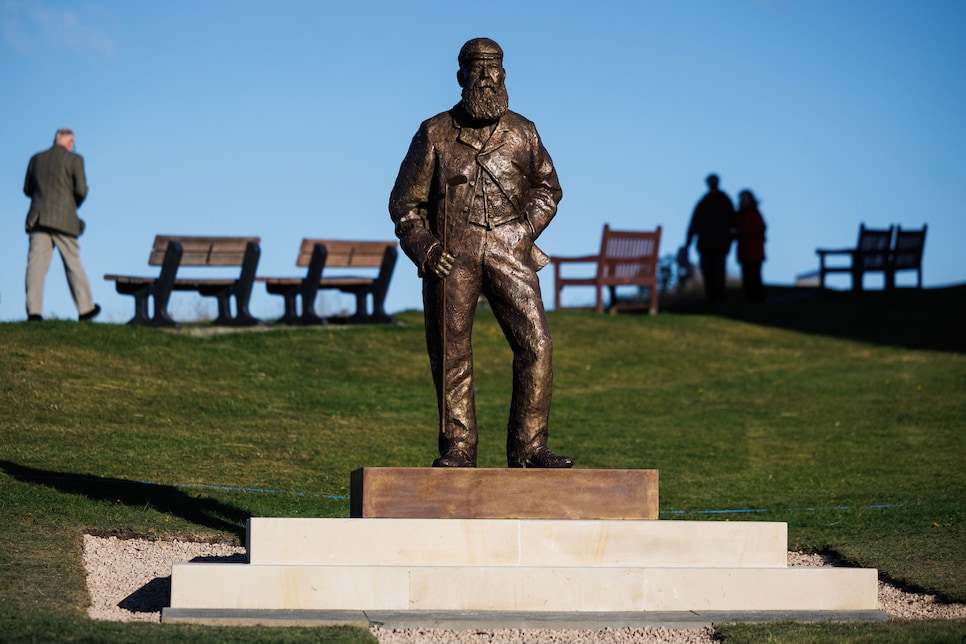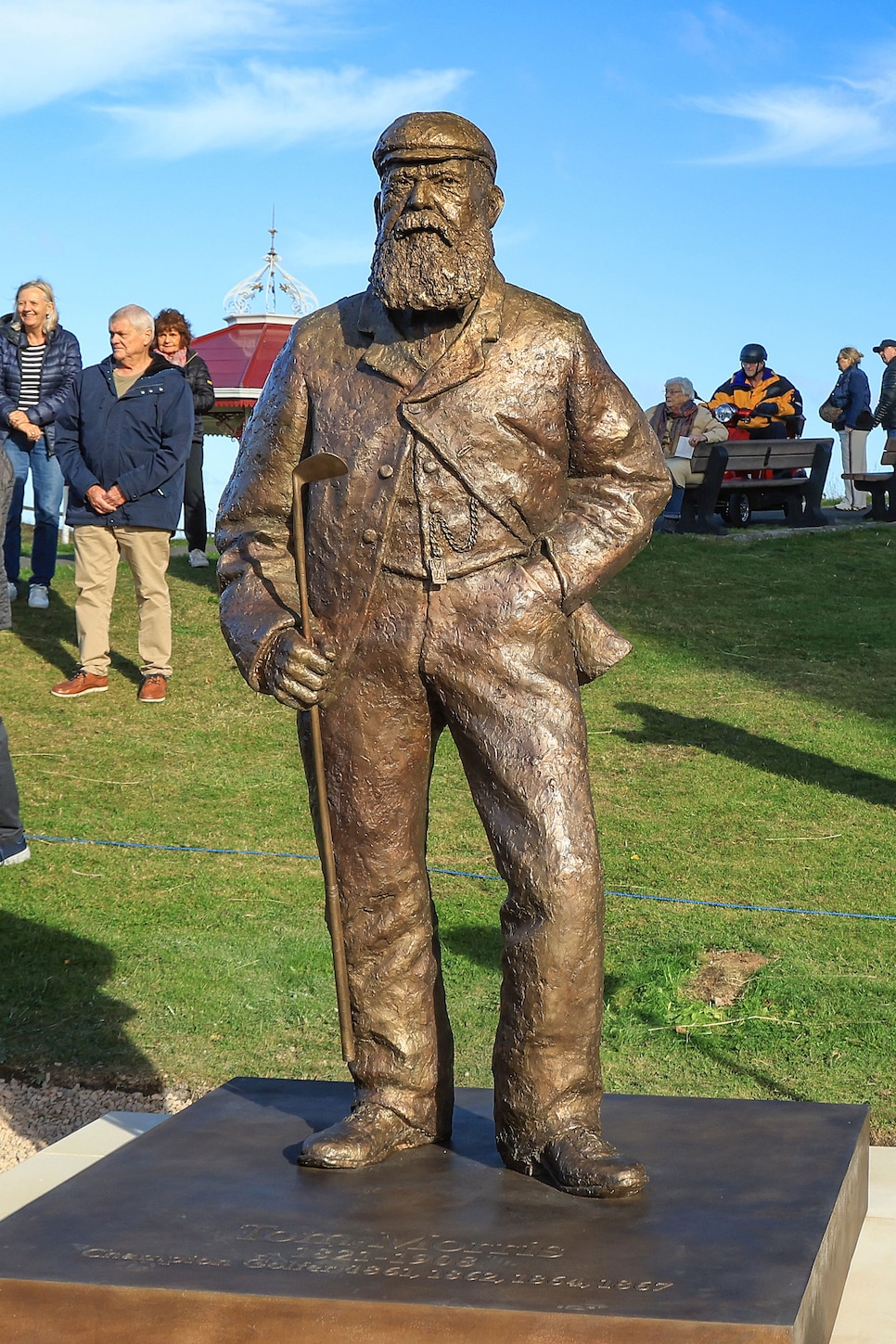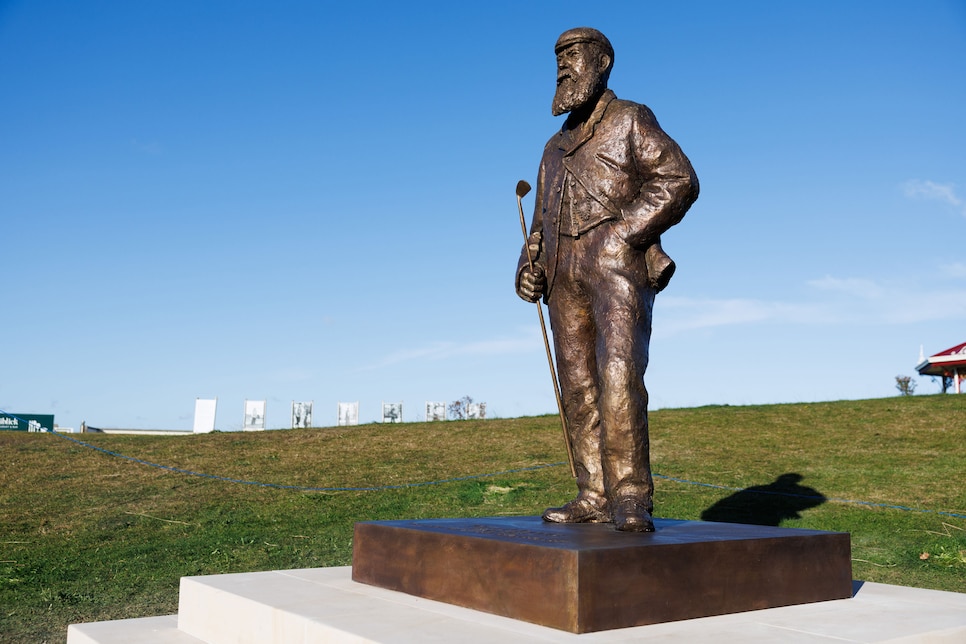Old Tom Morris statue becomes newest must-see landmark in St. Andrews – Australian Golf Digest

- by Admin
- October 2, 2024

ST. ANDREWS, Scotland — The inscription at his feet is simple:
Tom Morris 1821-1908Champion golfer 1861-62-64-67
But the view afforded David Annand’s sculpture of Old Tom Morris is spectacular. Situated on Bow Butts, the grassy bank that sits directly behind the Royal & Ancient Golf Club’s clubhouse, the “Grand Old Man of Golf” gazes straight down the 18th fairway of the game’s most famous course. Just to the right of the 18th green sits his shop and the flat above (now owned and occupied by his great-great granddaughter, Shelia Walker) where Old Tom lived for a while.
It is the perfect spot. But, interestingly, not the first option considered. According to Ronald Sandford, chairman of the Old Tom Statue Project, various locations were discussed before being dismissed.
“We had a variety of options,” says the former Royal Navy Commodore. “The south-west corner of the Himalayas. The first tee of the New Course. Near the caddie shack. But we didn’t want to get in the way of spectators or golfers. So we moved away. The access is there. It has visibility. … So this was the obvious solution.”
Guests who attended the ceremony unveiling a Old Tom Morris Statue in St. Andrews included former Open winner Sandy Lyle, project chairman Ronald Sandford, Morris’ great, great granddaugther Sheila Walker, sculptor David Annand and historian Roger McStravick.
David Cannon

Ross Parker – SNS Group

Ross Parker – SNS Group

David Cannon

Ross Parker – SNS Group
That Morris is worthy of such lasting recognition is not in doubt. Still the oldest winner of the Open Championship at 46—and still the only runner-up to finish behind his son—the phrase “legendary figure” barely does him justice. As well as being, for a time, the best golfer in the world, he distinguished himself in the field of course architecture. Prestwick, Muirfeld, Machrihanish, Royal Portrush and Royal County Down are just a few of his original designs.
Morris was also the father of modern greenskeeping. He introduced the concept of top-dressing putting surfaces with sand, which significantly helped turf growth. He introduced many novel ideas on turf and course management, including actively managing hazards and yardage markers. He was the first to use a push mower to cut greens.
Amongst the large crowd that gathered to watch the unveiling was another former Open champion Sandy Lyle. Winner of the claret jug in 1985, the Scot was also the first modern recipient of the champion’s belt, what was the forerunner to the icon trophy played for today.
“I just wanted to be around to see this thing that will be here for generations to come,” Lyle said. “Old Tom was such a remarkable man. This is probably long overdue. As an Open champion I do feel an affinity with the past winners. I felt strongly about being here. He did so much in the game of golf.”
Nothing comes easy though. It took Sandford nine years—the nine-strong committee was only formed in January this year—to get from “idea to unveiling” amidst a process riddled with hurdles. But the end result justifies any and all of what it took to get it done.
“The sculpture has a lovely finish to it,” said local historian, Roger McStravick, who was part of the statue project. “It fits. And it feels like Old Tom has come home.”
This article was originally published on golfdigest.com
The Latest News
-
November 15, 2024Rohan Bopanna and Matthew Ebden end doubles tennis partnership
-
November 15, 2024Everything You Need To Know About This Summer’s Australia Vs India Test Matches
-
November 15, 2024‘A Heavy Crown’: Australian media’s obsession with Virat Kohli remains unmatched | Cricket News – Times of India
-
November 15, 2024Red Dawn: Australian Football League’s Gold Coast Suns Launch ‘Fearless’ New Brand, Logo
-
November 15, 2024Kyrgios confirmed to return to ATP Tour at Brisbane International 2025





